reviewed by Truman Perkins
It is one of the most versatile and easy types of gardens to begin at any skill level.
I will walk you through how to get started successfully with some great tips that will keep you from getting discouraged. Growing herbs can be advantageous, and soon you will be reaping the rewards of mother nature right from the comfort of your own home.
I am an organic gardener by personal choice. I will touch on organic methods within this article but will not focus on those alone. That’s why I want to help anyone on their journey towards indoor herb gardening so that this guide will provide the information for anyone.
Contents
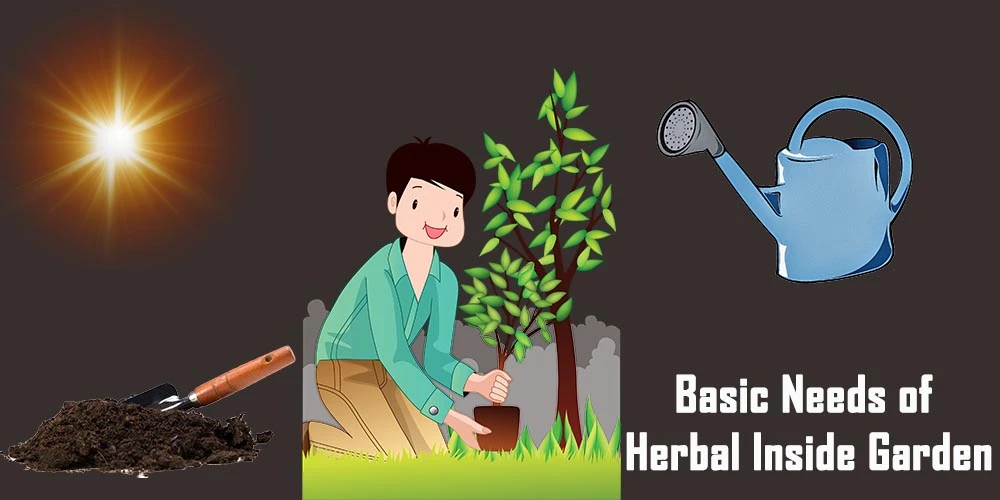
Herbs and plants, in general, have fundamental needs to always keep in mind; call it a recipe. This recipe can vary depending on which herb or plant is being grown, but the same ingredients are needed to produce the result.
The missing ingredients that change this from a blank recipe into a specific herbal formula are based on which type is being grown and the additional specific needs of that plant.
Herbs will require space to breathe and room for their roots to stretch and grow, which cannot be provided by regular soil or even store-bought soils labeled as garden soil. Soils marked potting mixes are the best-growing soils for your herbs.Most herbs will require good drainage and nutrient-rich soil for optimum growth. Regular dirt from outside will not be the perfect growing medium for your new herb garden; you can load it with parasites and harbor many ready-to-sprout weeds and grass seeds. It is also far too dense and often contains heavy Clay to prevent the drainage required for your growing plants.
Potting mix, my recommended choice.
⇒ Give your plants a great start with quality potting soil that will keep your plants thriving. You can’t go wrong with this product, loaded with nutrients essential for healthy plants. Click on the link to see for yourself. Fox Farm Ocean Forest Review
You Can Make your Mix.
Herbs need light to process energy and create the food they need to grow. It is an essential ingredient in their life. Sunlight or artificial sunlight amounts also help to regulate the herb’s growth and even its flavor.
Learn about Photosynthesis
To start an indoor herb garden, you will need to have 4 to 6 hours of sunlight a day available. When considering natural sunlight, the best positions in your home are in Southwest or Southern facing windows. If you have two or more intersecting windows, you can place your herb planters near these locations.
If you are unsure about the amount of sunlight being provided naturally for your plants, you can measure it with a sun meter. There are various sunlight meters available that can be placed inside a pot or on a surface that measure the light potential in a given location.
All is not lost if you do not have the natural light needed for your herbs’ healthy growth indoors. The market is flooded with many artificial lighting options that mimic the natural sunlight required by your plants. They range from pretty inexpensive alternatives to very high-end dollar sun giants used by major greenhouse producers.
⇒ You can learn more about grow lights and the different options available in another article on this site. The Best Grow Lights for Indoor Plants and Herbs – Creating Sunlight follow the link to learn more!
⇒Want the best lighting options I have found? You can also get a breakdown of LED lighting with this 10 Best LED Grow Lights review by clicking the link.
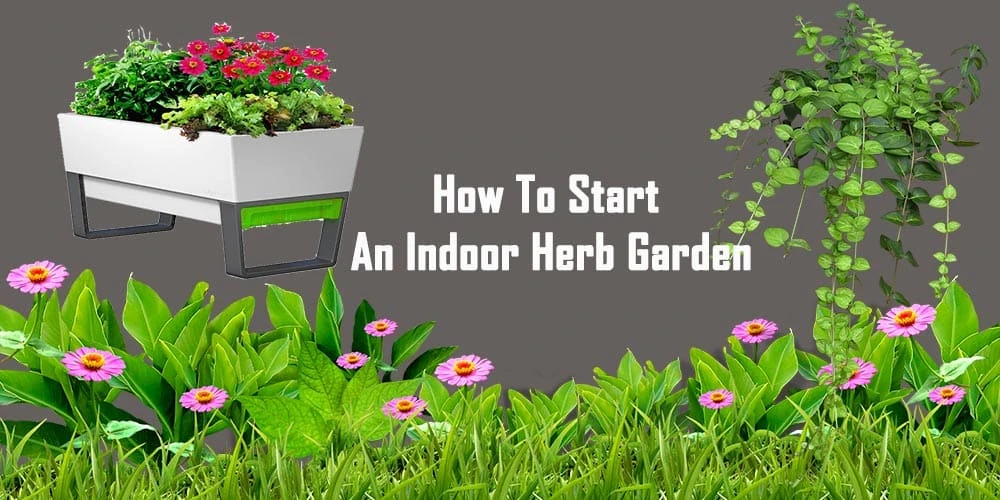
Soil and Light take more thought and time to get the right mix in preparing your indoor herb garden, whereas the last three ingredients are much more essential. They all play an essential part together and have to be maintained in the proper order.
Air
Herbs and other plants need air in two ways. I am sure you already know that plants combine water, sunlight, and carbon dioxide to produce sugar and oxygen through photosynthesis. They also need to have that same air to be able to move around their root system. We talked about this in the importance of having excellent loose soil, but it is also essential for the next part.
Water
The plant also uses water to produce its food and energy that allows it to grow. There can be too much water! You can overwater your plants to deprive them of the air their roots need to succeed. Whenever possible, water your herbs from underneath by planting them in containers with drainage holes and setting them in a couple of inches of water for 5 to 10 minutes. When watering from above, water slowly and evenly and watch for even saturation. Make your watering infrequent, allowing the top inch or two to dry out on your containers in between.
⇒ Improper watering is the leading cause of plant failure. Read an article here on How to water your plants.
Space
A decorative planter of mixed herbs can be beautiful, and while they are small, it may be OK. As your plants get larger, they should have their own space. The top growth and their roots are going to need room to spread out and grow. Crowded plants and seeds can deprive your herbs of the essential water and air they need as well. If your herb plant is getting very large, chances are the root growth is getting larger. Watch for the spacing in your plants’ ground every few months and transplant when any signs of them become root-bound into a larger container.
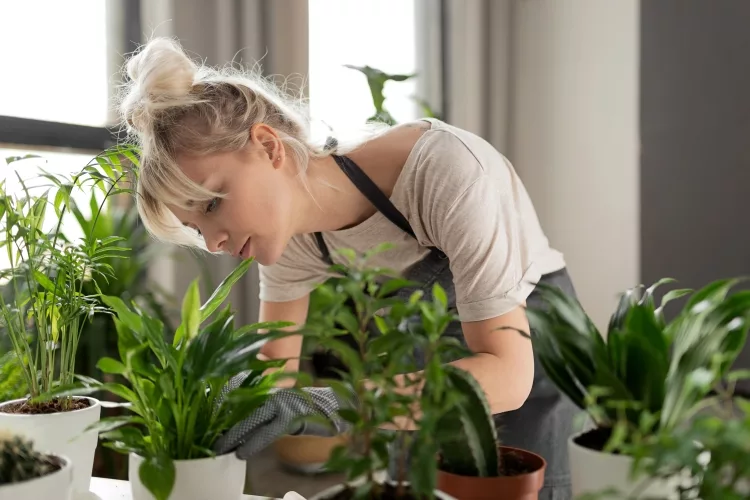
In learning how to start an indoor herb garden, you have a couple of options to begin. Typically a transplant is the easiest and quickest method to reap the rewards of fresh herbs. It is not always an option as often plant starts are not available for purchase throughout the year, and some herbs are fussy about being transplanted. Attempting both methods will give the experience and advantages of both.
Transplants
When buying starter plants for transplanting, be sure to inspect them thoroughly. The plant should be vibrant, firm, and green. Also, examine the soil that you can see; there should be no visible fungus or algae. Remember that anything you bring into your home can affect the rest of your indoor garden plants and herbs, so be picky.
Seeds
Purchase seeds from companies that you trust or that have a good reputation. Check the dates on the package. Although most seeds are good more extended than a year from the packaging date, they are kept under the right conditions. It is difficult to tell how a store card for last year’s seeds may be selling at discounted rates; fresh seeds are always best.
This is just a shortlist of the many available herbs out there to grow. You can try one, all, or none of these. What herbs you chose to start in your indoor garden space will be for your personal preference, and following the proper guidelines on the packages of seeds and the information I laid out for you, you should have great success!This is where a great debate may begin among other gardeners as the list of easy and hard to grow herbs tend to vary depending on opinion. I feel that when you meet all the basic needs listed above, patience, and any added research based on the specific herb chosen, they can all be quickly grown. I will cover some common herbs used more frequently and grown more quickly to get you a head start for practical purposes.
Dill
Fern leaf variety or dwarf fern leaf varieties are great indoor choices as they grew much shorter than their larger counterparts. They are slow to bolt (go to seed) and offer an excellent yield. Germinate in 7 to 21 days from seed.
Cilantro
Santro or Cruiser varieties are excellent choices as they are quick to germinate and slow to bolt. Germinate for 7 to 10 days.
Basil
There is a lot of varieties that all add different splashes of color and variations in flavor. I have found them all to be very successfully grown indoors. Note that they do not like cool drafts so if you place it in a window, make sure the temperature stays above 60 to 65 at all times. Keep Basil pinched, and it will continue to grow bushier and thicker stemmed. Most germinate within 5 to 10 days and require excellent warm soil, so keep in a warm place during germination like the top of your refrigerator or on a low heat grow mat.
You can get more specific information on growing basil by following this link to another article on this site. How to Grow Basil Indoors -A Family Favorite
Arugula
Some may consider this a salad green, but it is a herb that makes a great addition to your indoor herb garden. There are so many varieties, all great to try, but spice things up with lovely wasabi arugula for a kick of flavor. Germination 5 – 7 days, keep a continual planting schedule to keep fresh herbal greens to add to your favorite salads.
Mint
Many Varieties out there but be sure to keep mint growing in its container. Mint tends to overtake a pot and the flavor of other herbs. A little slower to germinate, but once growing, it is quick to show its beauty and, with proper care, can fill a pot. Germination 10 -15 days
Mint is a great herb to add to your garden.
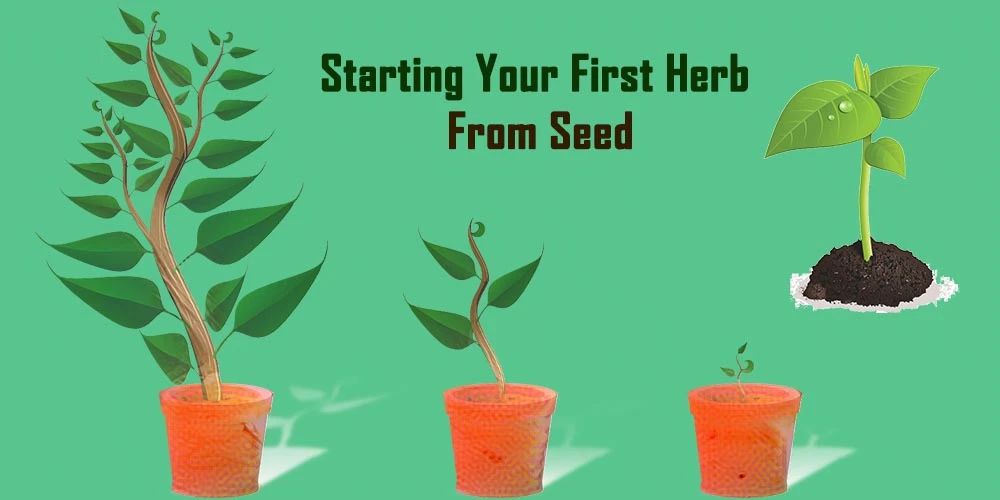
Starting your first herb plant from seed will take a little patience. Seeds take days, sometimes weeks, to germinate (begin to grow). When you select a herb seed, the package should indicate the amount of time required for germination. Example Basil typically takes 5 – 7 days to germinate.
Besides, your herb seed may have some specific needs to germinate. Some require light, some certain soil temperatures, and some particular soil. Some seeds even require being cut or split before planting or soaked for a certain amount of hours.
The seed packet also indicates the planting depth of the seed. This varies from herb to herb, so make sure you check every packet of seeds to be sure you are giving your seed the best sprouting chance.
The seed packet will also indicate some special notes about transplanting as well. Some herb plants do not like to be transplanted, so it is vital to start them in the pot or container you intend to grow them in or in peat pots that directly plant in their permanent containers later on.
Most herb seeds can be very tiny and take extra care in planting. These little seeds in varieties called seed tapes (small seeds are fixed to strip of video for easy planting) or pelleted in a bullet of nutrients and soil for easier planting can often be purchased. Both of these methods are also acceptable ways to plant, and I have found they work as well as direct seed.⇒ Helpful articles on site that could further assist you in finding seeds to start your herbal garden. Click any of the links below to learn more!
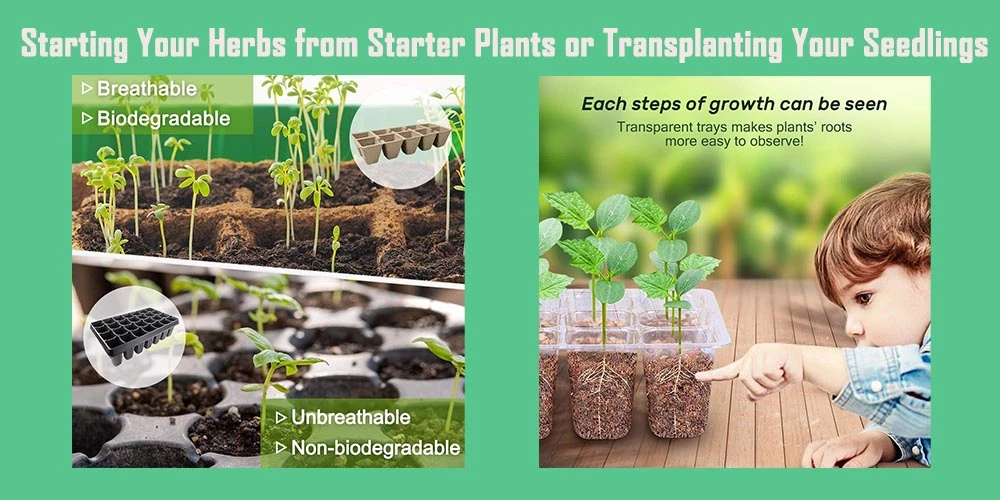
If you purchased herb plant starts or your seeds have grown to the transplant stage, it is time to move them to containers. There is a huge market full of various pots and boxes that you can use. If you are crafty, you can even create some for yourself.
Some recommended suggestions for choosing the suitable container:
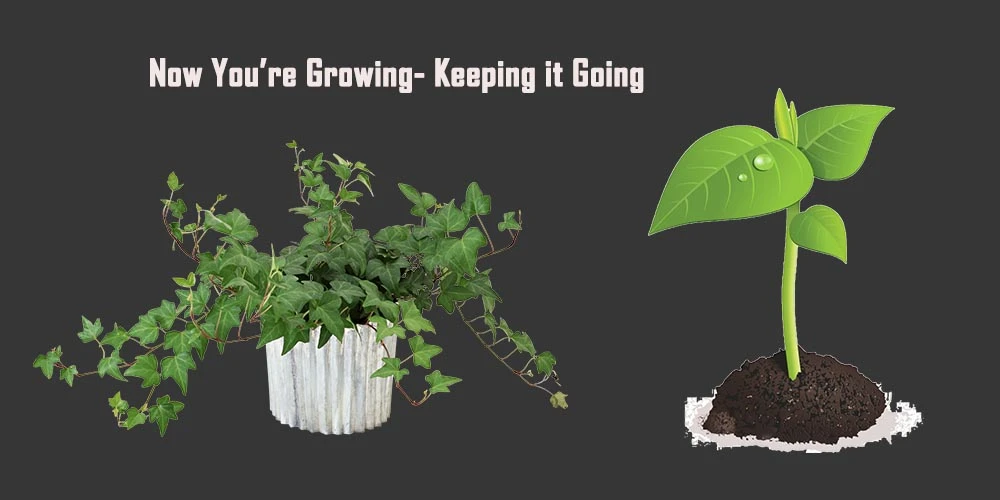
Once your herb plant has been transplanted for a couple of weeks and good growth has been established, you can begin to start pinching or pruning your plant. I refer to both methods as pinching is often the reference given when taken a small amount of fresh herb from a growing herb plant for immediate use. Be careful not to overdo it. Stripping your plant bare all at once will take away its ability to continue to flourish and grow. Patience, and you will have more than you need before long.
This is especially important for plants growing in windows or with natural sunlight. For even growth, make sure to keep turning your plants every few days so that all sides are getting the sunlight they crave.
Most herbs come from the Mediterranean and a much more humid environment than inside of our homes. Mist your herbs lightly once or twice a week to give them some added humidity they crave. Another easy tip is to set their pots on saucers filled with pebbles. When excess water drains off, it will stay below the stones and away from the pot and allow for humidity to increase through evaporation around your plants.
A slight breeze or tender touches. You can help keep your herb plants’ stems strong by allowing a light fan to blow on them occasionally or through regular gentle touching. This helps to mimic outdoor weather conditions and strengthens the plant, and keeps it growing thicker.
Use Herbs as Companions. See the article on site here!
Now you know how to start an indoor herb garden, then growing your indoor herb garden will fill your home with great smells of growing greenery and new culinary delights. Friends will admire your green decor and look to you for advice on starting an indoor herb garden now.
I hope that this guide and tips put you on the path to creating your green space with your herbal garden.
I welcome any comments or questions you have and look forward to helping you with your inside herd gardens. Drop A comment below, and let’s start a conversation!
Happy Growing!
 |
 |
 |
 |

About Truman Perkins
Truman Perkins is a Detroit-based SEO consultant who's been in the business for over a decade. He got his start helping friends and clients get their websites off the ground, and he continues to do so today. In his free time, Truman enjoys learning and writing about gardening - something he believes is a natural stress reliever. He lives with his wife, Jenny, and their twins in Detroit.
 |
 |
 |
 |
Get new FREE Gifts. Or latest free growing e-books from our latest works.
Disable Ad block to reveal all the links. Once done, hit a button below
 |
 |
 |
 |